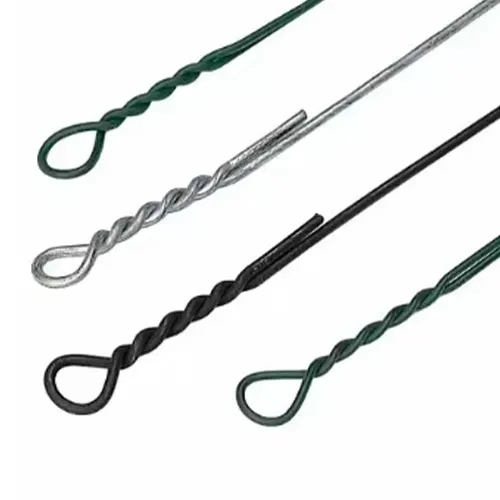-
 Phone:
Phone: -
 Email:
Email:

Cost Analysis of Baling Wire for Efficient Packaging Solutions
Understanding the Cost of Baling Wire A Comprehensive Overview
Baling wire, a crucial component in packaging and recycling industries, plays a significant role in ensuring the integrity and compactness of bales. Whether used in agriculture, industrial manufacturing, or waste management, the cost of baling wire can impact operational expenses significantly. This article explores the factors influencing baling wire costs, its types, market trends, and ways to optimize spending.
Types of Baling Wire
1. Steel Baling Wire The most commonly used type, steel baling wire is known for its strength and durability. It is available in various gauges, with thicker wires typically being more expensive due to the raw material costs involved in manufacturing.
2. Polypropylene Baling Wire This type is lightweight and often used for lighter materials like paper and various types of plastics. While generally less expensive than steel, it may not be suitable for heavier, denser bales.
3. Stainless Steel Baling Wire For industries requiring corrosion resistance, stainless steel baling wire offers longevity despite a higher price point. It's commonly utilized in harsh environments where durability is key.
4. Coated Wire Some baling wires come with a coating, such as vinyl or polyethylene, to prevent rust and extend lifespan. The additional processing adds to the cost but provides extra value in terms of durability.
Factors Influencing Baling Wire Costs
1. Raw Material Prices The cost of raw materials, particularly steel, significantly influences baling wire prices. Fluctuations in the steel market, driven by global demand and supply chain issues, can lead to price volatility.
2. Manufacturing Processes Different manufacturing techniques and technology levels impact production costs. Higher precision manufacturing methods tend to yield a more expensive product.
3. Volume Purchasing baling wire in bulk often results in lower per-unit costs. Companies looking to minimize expenses should consider their usage patterns and opt for bulk buying arrangements whenever feasible.
4. Quality and Specifications Higher quality and thicker wire usually come at a premium. Depending on the application, investing in high-grade materials can reduce the risk of wire breakage and subsequent labor costs tied to re-baling.
5. Market Competition The number of suppliers and competition level in the baling wire market can also affect pricing. Businesses should keep an eye on various suppliers to ensure they get the best possible deal.
baling wire cost

Current Market Trends
As of late 2023, the baling wire market is experiencing several key trends
- Sustainability With growing environmental awareness, there is an increased demand for recycled baling wire options, which could present cost savings for environmentally conscious companies.
- Technological Advances Innovations in manufacturing processes are gradually reducing production costs, making baling wire more accessible.
- Global Supply Chain Dynamics Ongoing global events and conflicts can cause disruptions in the supply chain, further influencing prices. Companies should develop contingency plans to mitigate these risks.
Optimizing Baling Wire Purchasing
1. Supplier Relationships Establishing good relationships with suppliers can lead to better pricing, personalized service, and first-hand knowledge of future price adjustments.
2. Inventory Management Keeping track of inventory levels and purchasing wire only as needed can prevent overstock and reduce waste, optimizing cash flow.
3. Comparative Shopping Regularly comparing prices across multiple suppliers can help businesses stay updated with market trends and find the best deals.
4. Long-term Contracts For companies with consistent needs, negotiating long-term contracts can lock in lower prices over time, protecting against market fluctuations.
5. Investing in Quality While it may be tempting to go for the cheapest option, investing in high-quality baling wire may save money in the long run through reduced breakage and less downtime.
Conclusion
The cost of baling wire is influenced by various factors ranging from raw material prices to manufacturing processes and market dynamics. By understanding these elements, businesses can make informed purchasing decisions that optimize costs while ensuring the effectiveness of their baling operations. As industries evolve, staying abreast of market trends will be essential for maintaining competitive pricing and operational efficiency in the baling wire market.
-
Wire Mesh for Every Need: A Practical SolutionNewsJul.25,2025
-
Steel Fences: Durable, Secure, and Stylish OptionsNewsJul.25,2025
-
Roll Top Fencing: A Smart Solution for Safety and SecurityNewsJul.25,2025
-
Cattle Farm Fencing Solutions for Maximum SecurityNewsJul.25,2025
-
Affordable Iron Binding Wire SolutionsNewsJul.25,2025
-
Affordable Galvanized Wire SolutionsNewsJul.25,2025
-
Wire Hanger Recycling IdeasNewsJul.25,2025








